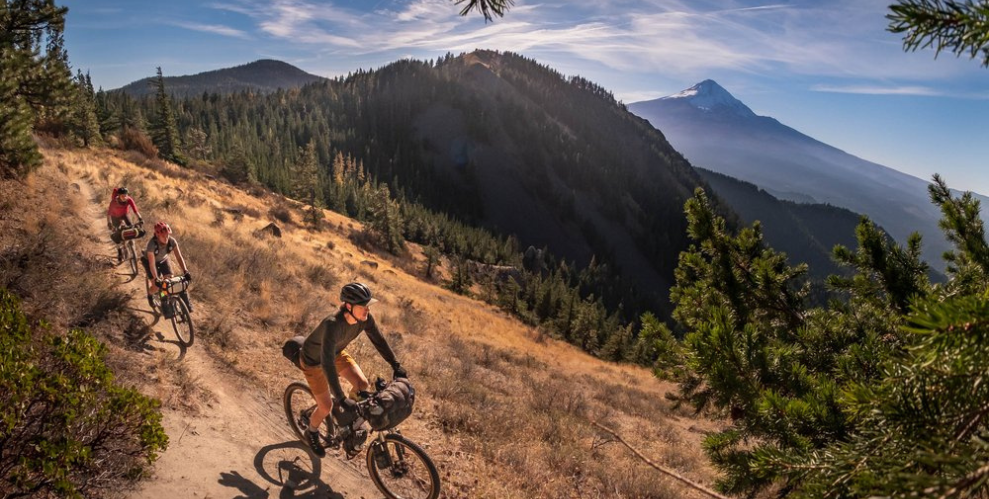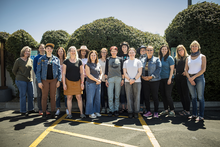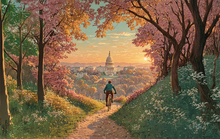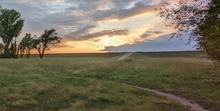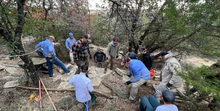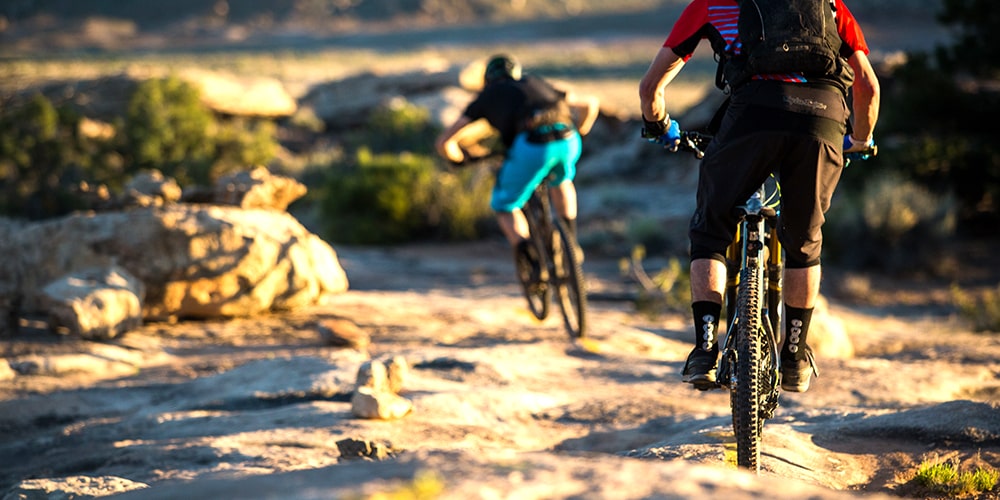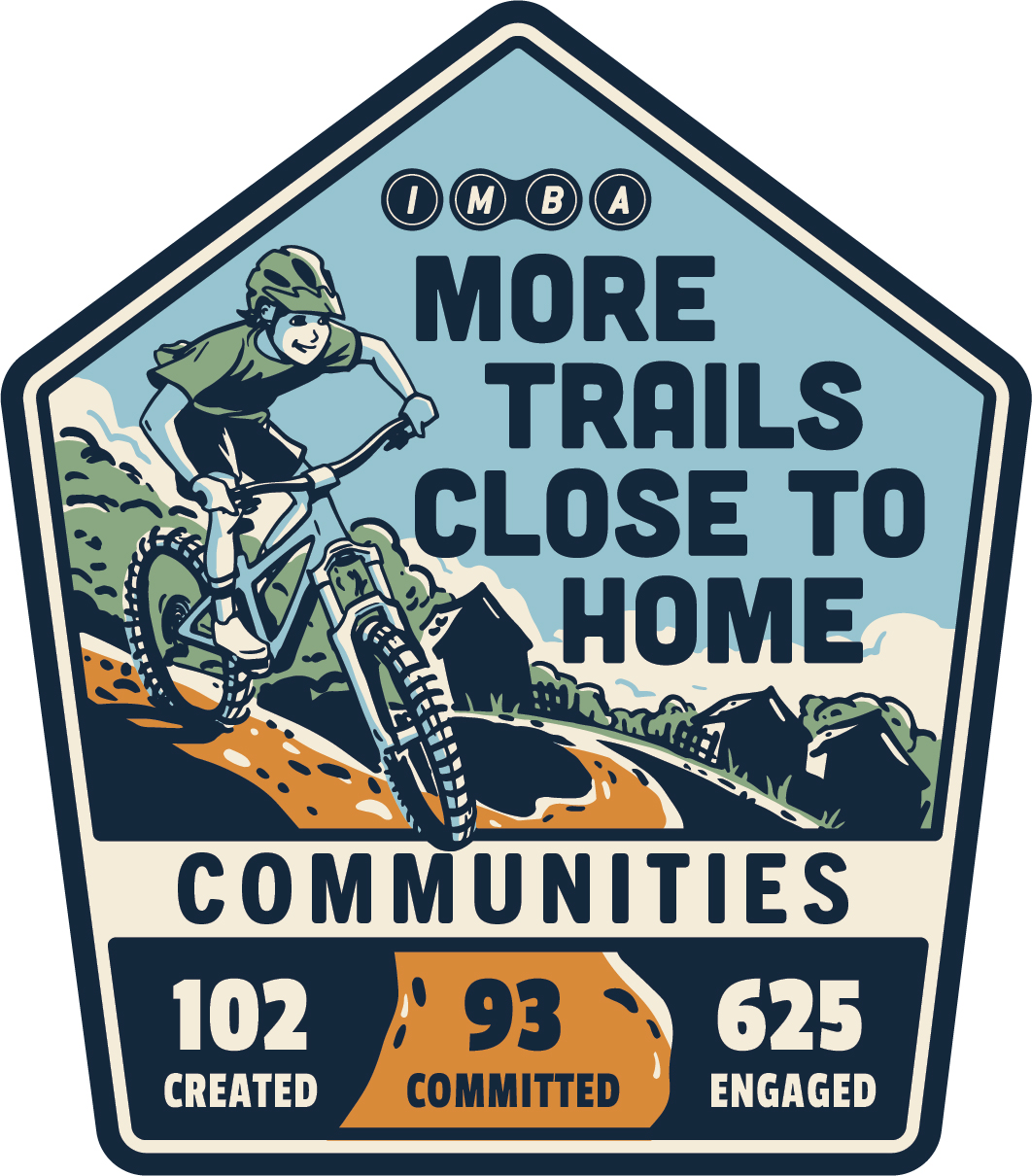Celebrating Women’s Mountain Biking Day 2025
Welcome to the fourth edition of our blog series highlighting mountain bike-friendly land designations and the advocacy behind trail protections within these designations. This time, we feature the National Recreation Area, a designation that specifies access for mountain biking explicitly for the benefit of human health and well-being, with a focus on access for large numbers of people close to where they live. More trails close to home!
Although new National Recreation Area designations have slowed in recent decades as the availability of ideal spaces has plateaued (in large part due to, well, National Recreation Areas), these areas can be impacted by land planning and legislation just like other federal designations. As such, it’s important for mountain bikers to stay abreast of opportunities to engage and advocate for trails and access in National Recreation Areas.
National Recreation Areas - A History Lesson
National Recreation Areas are a land designation that can be designed to protect and even increase access for mountain bikers on public lands. Like National Monuments, they are protected areas. However, unlike National Monuments that aim to protect specific natural, cultural, or historic features of significance. National Recreation Areas are designed to provide outdoor recreation opportunities often centered around where people live, work, and play—specifically, within 250 miles of urban population centers.
“Recreation in America should never become a club for the enthusiast, a toy for the well-to-do, or an activity reserved for the vigorous. Recreation is needed by most people, of all ages, to achieve useful, satisfying lives.”
Under Secretary of Health, Education and Welfare, Wilbur J. Cohen, 1965
In the 1960s, the Recreation Advisory Council (created by President John F. Kennedy) created criteria for National Recreation Areas, inspired by growing interest in the idea that access to public lands should improve the quality of life of Americans, and as such, opportunities for outdoor recreation should be supported and increased. Lake Mead National Recreation Area became the country’s first National Recreation Area in October of 1964. Since then, 39 more National Recreation Areas have been designated in 26 states and two bodies of water that are managed by three federal agencies: the National Park Service, the United States Forest Service, and the Bureau of Land Management, sometimes in concert.
National Recreation Areas see some of the highest visitorship of any public lands in the U.S. due to their intentional proximity to large urban centers. They offer a variety of outdoor recreational activities, from camping and boating to swimming, fishing, hiking, and biking.
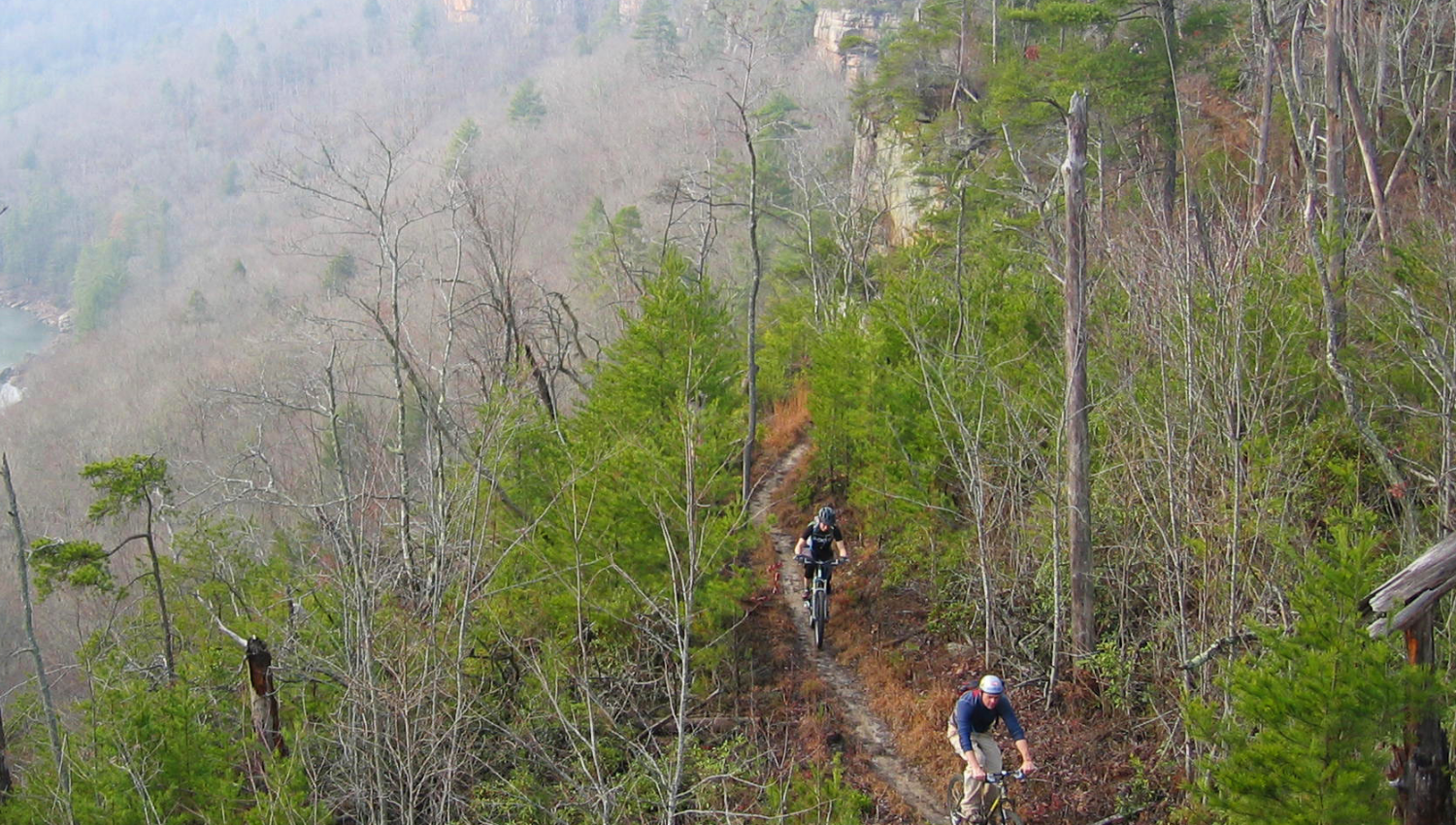
Why do National Recreation Areas matter to mountain bikers?
National Recreation Areas are found across the country and are largely inclusive of mountain biking. Additionally, the management of National Recreation Areas allows for collaboration with mountain bike and trail organizations in land stewardship and ongoing planning.
A few trails in National Recreation Areas our IMBA team loves to ride:
- Iron Mountain Trail in the Mount Rogers National Recreation Area in the Jefferson National Forest, VA
- Big South Fork (an IMBA EPIC Mountain Bike Trail) in the Big South Fork National River and Recreation Area, TN
- Chandler Ridge, Leicester Hollow and Oak Ridge Trails in Moosalamoo National Recreation Area, VT
- Spruce Knob to Seneca Creek (also an IMBA EPIC Trail) in the Spruce Knob-Seneca Rocks National Recreation Area in WV
Although all National Recreation Areas were established to provide access to outdoor recreation, mountain biking accessibility in National Recreation Areas can vary. Each one has specific regulations and policies regarding what types of recreational activities are permitted, and land management plans that govern where each activity is allowed, including consideration for seasonal restrictions.
Ensuring mountain bikes retain access in any land designation can be tricky, and National Recreation Areas are no exception. Even after they are established, boundaries and land use can change, requiring mountain bike advocates to stay abreast of proposed legislation and land management plans. This type of action often requires a broad scope and levels of participation that are best achieved through statewide organizing. It can take a lot of energy, and can lead to awesome advancement for trails! It can also lead to frustration.
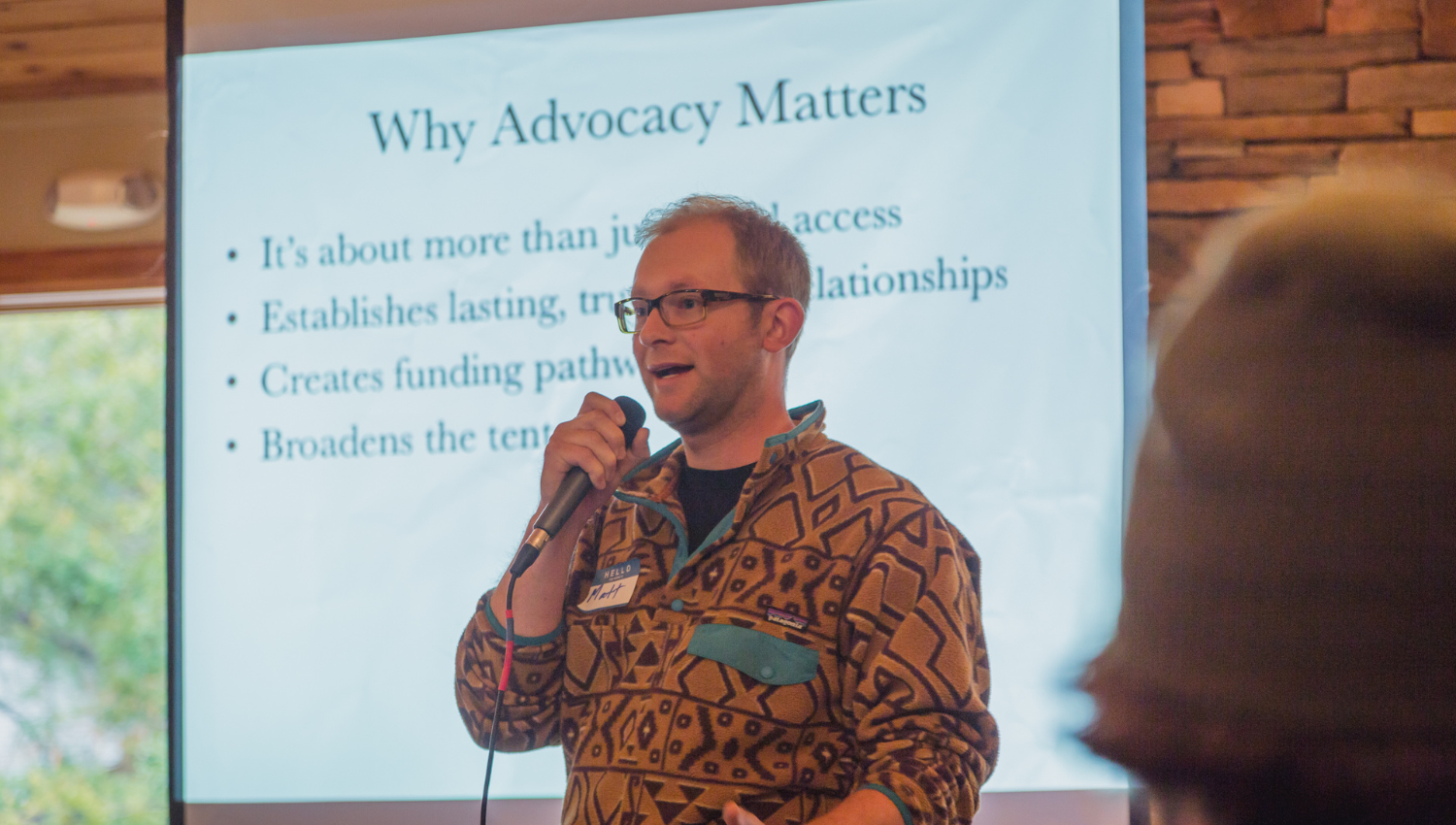
Staying Engaged: Statewide Organizing and Mountain Bike Advocacy
Oregon’s Mt. Hood is the newest National Recreation Area, established in 2009. Rich with opportunities for diverse outdoor recreation enthusiasts, Mt. Hood boasts more than 140 miles of trails open to mountain bikes. The Northwest Trails Alliance, 44 Trails Association, and other members of the Oregon Mountain Biking Coalition contribute to the maintenance, planning, and ongoing partnership to keep mountain bikes at the forefront of recreation around Mt. Hood. Check out the Fifteenmile Trail #456 for some killer scenery and intense riding. While some important mountain biking access was lost as part of the 2009 Mt. Hood Wilderness additions that created the National Recreation Area, today the area is immensely enjoyed for its current world-class riding opportunities.
In 2022, mountain bikers in Oregon took the opportunity to uplift a proposed bill that would have had sweeping impacts on mountain biking in the Mt. Hood National Recreation Area. This would have made it the fifth largest National Recreation Area in the country and protected, expanded, and enhanced mountain bike trails in the area. The statewide Oregon Mountain Biking Coalition (OMBC) led the efforts.
Fully volunteer-led, OMBC includes 16 mountain bike organizations across Oregon. Representatives from these organizations work together, at the direction of their members, to “democratically develop stances, policy, and strategy, and to improve mountain biking throughout Oregon.”
One such stance was the support for the Mt. Hood REC Act of 2022. If this bill, introduced by Congressman Blumenauer (D-OR), was enacted into law, it would have provided an opportunity to address sustainable recreation needs, equitable access to the outdoors, environmental conservation, and climate change. The proposal included expanding the area by more than 350,000 acres; had mandates to plan and build new socially, ecologically, and economically sustainable trails and trail networks; facilitated increased volunteer opportunities and collaboration; and prioritized access opportunities for traditionally underserved communities.
OMBC has done fantastic work engaging with this bill and advocating for mountain biking. They created powerful messaging campaigns, FAQs, and educated their stakeholders and allies in outdoor recreation. They partnered with national leaders in recreation and conservation advocacy such as Outdoor Alliance to share calls to action across the state and nationwide. Through their statewide partnerships, OMBC did their part to activate the more than 160,000 mountain bikers in Oregon. As of the end of the 117th legislative session, Congress did not pass the Mt. Hood REC Act of 2022. The bill remains tabled.
Naturally, some mountain bikers in Oregon are frustrated with this status, but the powerful story that cannot be ignored is the effort put forth by mountain bikers and their allies across the state. This impressive advocacy work gains the attention of representatives and land managers. It bolsters mountain bikers’ credibility and collaboration as a strong and active trail user group. And as with many legislative bills and land plans, this recent work done by OMBC may play a strong role in informing future proposals on Mt. Hood.
Sometimes land management plans can impact how this type of land is used and accessed, and sometimes federal legislation is required to change the size, scope, or large scale management of a National Recreation Area. Staying abreast of land management planning cycles, new and new-again policies, bills, and laws that have the potential to protect and enhance trails is a hugely impactful practice for any mountain bike club. It is especially powerful when carried out with collaborative efforts through statewide organizing. Cheers to OMBC for incredible statewide advocacy.
"Trail-based planning and recreation such as mountain biking are great tools for land conservation and resource protection at a site-specific level because they’re more sustainable than unplanned and unmanaged recreation. This is where designations such as National Recreation Areas can come into play. They are highly tailorable to the uniqueness of the land and the protections needed, and yet can actively support the bike-friendly management actions so many Americans seek to enjoy our public lands. National Recreation Areas are a win-win scenario!” -Aaron Clark, IMBA’s Government Affairs Policy Manager
Advocacy in Action, Always
At the heart of any mountain bike-friendly land management plan, from National Monument designation, to defining Recreation Emphasis areas, to trail building in National Recreation Areas, there exist stalwart and hardy mountain bike advocates, local legends, and trail communities. These trail champions respond to threats to trails, build proactive campaigns, and commit to ongoing engagement with policy and policymakers to uplift the voices of mountain bikers and ensure we are at the table to protect trails. We see and celebrate these mountain bike advocates. IMBA is proud to be able to help mountain bike organizations across the country stand up for formal advocacy at the local, regional, state, and national levels, and we’ve got your back. Keep it up, trail champions!
